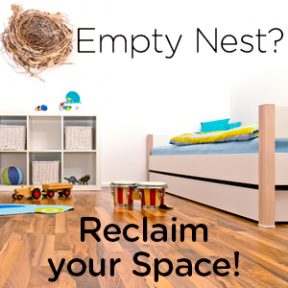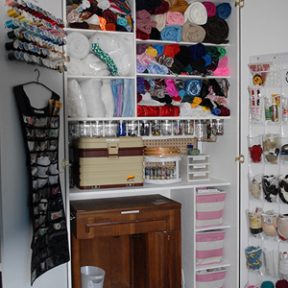 Public schools require students to take over 100 standardized tests between preschool and 12th grade. When you consider the time students spend preparing for these tests (teachers and administrators need these scores to be high) and the actual days that it takes to administer them, how many days do the students get to actually engage in the material they are supposed to be learning? HMMMM.
Public schools require students to take over 100 standardized tests between preschool and 12th grade. When you consider the time students spend preparing for these tests (teachers and administrators need these scores to be high) and the actual days that it takes to administer them, how many days do the students get to actually engage in the material they are supposed to be learning? HMMMM.
Most American schools only have 180 days of instruction per year. That doesn’t leave many days left for teaching! With the Common Core curriculum, even more testing is required. No wonder students don’t have comprehensive knowledge in each subject area before they move on to the next class. They’re spending too much time taking (and learning how to take) standardized tests!
As a result of this, kids across the U.S. are starting to opt out of standardized tests.
 Public schools require students to take over 100 standardized tests between preschool and 12th grade. When you consider the time students spend preparing for these tests (teachers and administrators need these scores to be high) and the actual days that it takes to administer them, how many days do the students get to actually engage in the material they are supposed to be learning? HMMMM.
Public schools require students to take over 100 standardized tests between preschool and 12th grade. When you consider the time students spend preparing for these tests (teachers and administrators need these scores to be high) and the actual days that it takes to administer them, how many days do the students get to actually engage in the material they are supposed to be learning? HMMMM.
Most American schools only have 180 days of instruction per year. That doesn’t leave many days left for teaching! With the Common Core curriculum, even more testing is required. No wonder students don’t have comprehensive knowledge in each subject area before they move on to the next class. They’re spending too much time taking (and learning how to take) standardized tests!
As a result of this, kids across the U.S. are starting to opt out of standardized tests.
 Seriously, you don’t need to be a cabinetmaker to build a murphy bed. I bought the hardware kit from Lee Valley in Maine after getting a referral from a friend. When I received the boxes in the mail, I found everything I needed to build the mechanical part of the bed laid out in neat packaging, 2 packets of instructions, and a DVD. At first, it was a little daunting to see 2 instructional booklets, but then I watched the DVD from START to FINISH so I understood conceptually how it was going to come together. I’m a visual and kinesthetic learner so it made sense to me and this was a LIFE SAVER!
Lee Valley makes it easy to determine how much wood you need. I laid out a cut sheet to make the best use of each sheet of plywood because that was going to be the biggest cost factor. They actually tell you the exact measurements for each cut of wood. This is great as long as you don’t change the plans, which of course, I did. I wanted to add 5 horizontal shelves that go directly above the headboard inside the murphy bed frame, not additional shelves outside – outside would have been much easier. So I had to add 6″ to the depth of the entire bed and all of the pieces that were affected by this change. Needless to say, I was a regular at the lumberyard as I was down there every day for 5 days getting things cut and (yup) re-cut. But it was worth all the headaches because the shelves are the best part of the beds — and none of the custom designs had them!
Seriously, you don’t need to be a cabinetmaker to build a murphy bed. I bought the hardware kit from Lee Valley in Maine after getting a referral from a friend. When I received the boxes in the mail, I found everything I needed to build the mechanical part of the bed laid out in neat packaging, 2 packets of instructions, and a DVD. At first, it was a little daunting to see 2 instructional booklets, but then I watched the DVD from START to FINISH so I understood conceptually how it was going to come together. I’m a visual and kinesthetic learner so it made sense to me and this was a LIFE SAVER!
Lee Valley makes it easy to determine how much wood you need. I laid out a cut sheet to make the best use of each sheet of plywood because that was going to be the biggest cost factor. They actually tell you the exact measurements for each cut of wood. This is great as long as you don’t change the plans, which of course, I did. I wanted to add 5 horizontal shelves that go directly above the headboard inside the murphy bed frame, not additional shelves outside – outside would have been much easier. So I had to add 6″ to the depth of the entire bed and all of the pieces that were affected by this change. Needless to say, I was a regular at the lumberyard as I was down there every day for 5 days getting things cut and (yup) re-cut. But it was worth all the headaches because the shelves are the best part of the beds — and none of the custom designs had them!

What lumberyards cut your wood?
Forget big box stores because they’ll only cut your wood to rough measurements — and you want your cuts to be within a 1/16″. That means you’ll need cabinet cuts with a good carbide-tipped blade that most good independent lumberyards will provide for you. They charge about a dollar a cut, which is really great for me because I don’t have a table saw and they’re much better at precision cuts than I am. The best part about being at the lumber yard was that I got great advice from EVERYONE. They’re all skilled and experienced so when I showed them my drawings, they were intrigued and offered great recommendations. One guy even built a mock-up to show me how to install the really unique hinges in the kit: They helped me pick drill bits to cut the holes for the mechanisms, and even told me where to buy some items cheaper at other stores! When I got back from the lumberyard, I just laid out the pieces and put them together with a screw gun and my friend the nail gun.
It seemed like it took more time to iron on the veneer than it did to assemble the whole bed. After the veneer was placed on all the plywood edges, screwing the pieces together was easy to do. I did all of this in my garage, and then carried the pieces up to the bedrooms. In the bedrooms, I attached the piston mechanism per the instructions, which was surprisingly simple to do. Once they were in place, we pushed the murphy bed against the wall and anchored it to a stud.
Next, I placed an old mattress on the bed and added a memory-foam topper for comfort. With the topper, it doesn’t matter what shape the mattress is in — everything is so soft! YOU NEED THE WEIGHT OF THE MATTRESS for the pistons to work effectively. Like a child in awe, I was mesmerized by the smoothness and ease that the mattress lowered to the floor. It was like magic!
They helped me pick drill bits to cut the holes for the mechanisms, and even told me where to buy some items cheaper at other stores! When I got back from the lumberyard, I just laid out the pieces and put them together with a screw gun and my friend the nail gun.
It seemed like it took more time to iron on the veneer than it did to assemble the whole bed. After the veneer was placed on all the plywood edges, screwing the pieces together was easy to do. I did all of this in my garage, and then carried the pieces up to the bedrooms. In the bedrooms, I attached the piston mechanism per the instructions, which was surprisingly simple to do. Once they were in place, we pushed the murphy bed against the wall and anchored it to a stud.
Next, I placed an old mattress on the bed and added a memory-foam topper for comfort. With the topper, it doesn’t matter what shape the mattress is in — everything is so soft! YOU NEED THE WEIGHT OF THE MATTRESS for the pistons to work effectively. Like a child in awe, I was mesmerized by the smoothness and ease that the mattress lowered to the floor. It was like magic!
 Even though I was exhausted after assembling the beds, I placed every knick knack on the shelves and lay in the bed admiring them. I can’t wait for the girls to come home to see their individual murphy beds with all of their mementos. And now I can close up the murphy bed and start my art projects!
Moral of the story: If you’re an empty nester, build a murphy bed in your extra room!
Send photos and let me know how it goes in the comments!
Even though I was exhausted after assembling the beds, I placed every knick knack on the shelves and lay in the bed admiring them. I can’t wait for the girls to come home to see their individual murphy beds with all of their mementos. And now I can close up the murphy bed and start my art projects!
Moral of the story: If you’re an empty nester, build a murphy bed in your extra room!
Send photos and let me know how it goes in the comments!
 Let’s face it – nobody likes Parent-Teacher Conferences. No matter how perfect your child is, you still feel like you’re in trouble as you sit on the little chairs in hallway waiting for your turn to see The Teacher. You’re at her mercy! Although you want to know how your precious is doing academically and socially, her pearls of wisdom may not be exactly what you are expecting to hear. So how can you make the best of it?
Let’s face it – nobody likes Parent-Teacher Conferences. No matter how perfect your child is, you still feel like you’re in trouble as you sit on the little chairs in hallway waiting for your turn to see The Teacher. You’re at her mercy! Although you want to know how your precious is doing academically and socially, her pearls of wisdom may not be exactly what you are expecting to hear. So how can you make the best of it?
BE PREPARED!
Some teachers will send home a questionnaire for you to complete so they understand your child’s family and extracurricular activities. I know this may seem like more work, but take the time to give as much information as you can. If you’re worried that Joey doesn’t write down all of his homework assignments or that he is having trouble understanding concepts in science, describe the circumstances. Teachers want to help and if you give them enough information, they’ll offer good advice. But be careful to word your concerns so the teacher doesn’t feel like you’re blaming or attacking her. Many teachers deal with verbally abusive parents (parents aren’t the only ones stressed out about Parent-Teacher Conferences!). You don’t want to be one of those parents!
My advice: Take cookies!
If the teacher doesn’t send home a questionnaire, fill out this form. Either way, make a copy for yourself and file it. Then send it in with your child at least a day before your scheduled conference to give the teacher time to read it. This way, your meeting will be more productive!
 If you’re an empty nester like I am, you probably have a few extra bedrooms that are in that in-between stage of still being your child’s old bedroom (yup, I’m that sentimental mom!) and your future sewing room or art studio that you’ve dreamed about for years. Well, I’m embarrassed because my eldest daughter moved out in 2003 (over a DECADE ago) and my youngest in 2007! Just think about how much rent I could have collected over those years!
I don’t know why but I just couldn’t throw out their favorite dolls and art projects that they treasured as kids, even though they claim that they don’t have space for it in their apartments. How did this become my problem? Nevermind, it’s up to me to solve it!
I started reading up on murphy beds and hatched a plan to convert their old time-capsule bedrooms into functional rooms for sewing and art projects. But then I learned that the prices START at $2,000 and go up as high as $4,000 (and I needed 2!), and I knew I couldn’t afford to buy them. And besides…I couldn’t find EXACTLY what I wanted. I’m picky! If I couldn’t buy them, I’d MAKE them!
I do my best thinking in the middle of the night, so I got out of bed one night to draw up plans to build murphy beds. My biggest problem was that I wanted to save their things but I didn’t want the room to look like a memorial to them. How could I display their stuff yet have the space and ambiance to inspire the inner Picasso in me?
Late nights are great for this kind of brainstorming, so I thought SHELVES. Why not put shelves over the bed to hold all of their stuff? That way, when the bed is closed, the shelves are hidden. Problem solved! I could put all of my girls’ knick knacks on those shelves so when they come home to visit, they could see all of their treasures and sleep in a bed all nestled in their awesomeness! And when they leave, I could close up the bed and have a white board and creative space available in my art studio and sewing room to create the next amazing project. The best of both worlds!
Believe it or not, building a murphy bed is actually really easy…and I’ll tell you exactly how I did it next week! With photos!
If you’re an empty nester like I am, you probably have a few extra bedrooms that are in that in-between stage of still being your child’s old bedroom (yup, I’m that sentimental mom!) and your future sewing room or art studio that you’ve dreamed about for years. Well, I’m embarrassed because my eldest daughter moved out in 2003 (over a DECADE ago) and my youngest in 2007! Just think about how much rent I could have collected over those years!
I don’t know why but I just couldn’t throw out their favorite dolls and art projects that they treasured as kids, even though they claim that they don’t have space for it in their apartments. How did this become my problem? Nevermind, it’s up to me to solve it!
I started reading up on murphy beds and hatched a plan to convert their old time-capsule bedrooms into functional rooms for sewing and art projects. But then I learned that the prices START at $2,000 and go up as high as $4,000 (and I needed 2!), and I knew I couldn’t afford to buy them. And besides…I couldn’t find EXACTLY what I wanted. I’m picky! If I couldn’t buy them, I’d MAKE them!
I do my best thinking in the middle of the night, so I got out of bed one night to draw up plans to build murphy beds. My biggest problem was that I wanted to save their things but I didn’t want the room to look like a memorial to them. How could I display their stuff yet have the space and ambiance to inspire the inner Picasso in me?
Late nights are great for this kind of brainstorming, so I thought SHELVES. Why not put shelves over the bed to hold all of their stuff? That way, when the bed is closed, the shelves are hidden. Problem solved! I could put all of my girls’ knick knacks on those shelves so when they come home to visit, they could see all of their treasures and sleep in a bed all nestled in their awesomeness! And when they leave, I could close up the bed and have a white board and creative space available in my art studio and sewing room to create the next amazing project. The best of both worlds!
Believe it or not, building a murphy bed is actually really easy…and I’ll tell you exactly how I did it next week! With photos!
 We don’t let our kids get away with lack of responsibility, so why are we letting Big Oil? Make them pay to fix their mistakes!
We don’t let our kids get away with lack of responsibility, so why are we letting Big Oil? Make them pay to fix their mistakes!
In an article in the Santa Cruz Sentinel, Joe Jordan talks about a new approach to reducing carbon emissions. This is a revenue-neutral, market-based system that is already up and running in British Columbia, and working well.
I love this solution for climate change (global warming)! It’s simple, easily understood, and fair. If a child intentionally destroys his brother’s smart phone, wouldn’t a good parent make the child replace the phone? Natural and logical consequences. Period. So why not make the world’s carbon polluters responsible for repairing the damage they have intentionally caused?
 If you’re like most parents, you have a job and it doesn’t stop just because your kids have the summer off. How rude! So they have between 10-12 weeks off from school and you need to get child care, transportation, and activities lined up. Roll up your sleeves, grab a stack of Post-Its, and open up your calendar.
If you’re like most parents, you have a job and it doesn’t stop just because your kids have the summer off. How rude! So they have between 10-12 weeks off from school and you need to get child care, transportation, and activities lined up. Roll up your sleeves, grab a stack of Post-Its, and open up your calendar.
Option #1: Family and Friends
Summer is a great time for your kids to spend time with grandparents, aunts and uncles, and friends. Check to see what weeks work best for family or friends and block them off your calendar. If your kids will be traveling distances to stay with family, book your flights early to get the best rates. Bonding time with Gramps!
Option #2: Summer Programs and Camps
Meet with your kids to get their input about things they’d like to do over the summer. Chances are, they’ve heard about great robotics or maker programs or super fun sleep-away camps. Talk to your friends about programs their kids enjoyed and search online to learn about other opportunities. Inquire early and reserve space as soon as possible; good programs fill up months in advance. Time to immerse themselves in their passions!
Option #3: Create your own program
If filling the gaps between camps and visits to Grandma’s is impossible or too expensive, consider setting up your own program for the summer. This may sound like a lot of work but it’s actually easy because you’ll be able to create exactly what you want — all in one place. You can make your kids’ summer really exciting by creating a theme like theater, robotics, or studio art! I set up summer theater so my girls starred in musicals — they absolutely loved it and they developed great singing, dancing, and speaking skills. We also added summer reading, math exercises, and intriguing science experiments in the mornings so they started the new school year at the top of their game! Invite a few other kids (tuition), which will pay for your teacher and materials — making your summer program fun and FREE! Everyone likes free!
 Did you know that there’s an easy way to make sure that you’re taking the best classes to get into a UC?
Did you know that there’s an easy way to make sure that you’re taking the best classes to get into a UC?
When guidance counselors are responsible for hundreds of students, it’s no surprise that many high school students miss important opportunities to take classes that are required (or highly desirable) to get into a UC or selective college. I’ve seen this often. Now everyone — not just the lucky ones who can afford private college advisors — can make sure their transcripts will make them eligible to get into the top UC’s. Most public high schools in California have access to the Transcript Evaluation Service (TES) tool.
Finally, equal opportunity for all Californians!
 First of all, let me just say that I am NOT a hoarder! I promise! I just NEED to save every square inch of fabric that I have left over from all of my sewing projects. THIS IS PERFECTLY NORMAL. Finding all that stuff again IS an issue, though. I used to keep everything in boxes, but you can only have so many boxes before they start burying your loved ones in box avalanches.
Realizing that I needed to address this problem BEFORE the Intervention happened, I decided to pull out those boxes in various places in my house, garage, and storage area to see what I ACTUALLY had. The goal was to somehow display all of the fabric and accessories so I could see everything at a glance and find what I needed immediately. And thus the SEWING CABINET was born.
I wanted everything in the SAME PLACE. That left only one option for me: I had to build a custom sewing cabinet to house all of my things.
Building cabinets is simple. It’s just like putting a jigsaw puzzle together only you need to figure out how big all of the pieces are going to be. And cut them. But it’s BETTER than jigsaw puzzles, because as far I know, you don’t use nail guns on jigsaw puzzles. Maybe I’m doing it wrong, though…
(Click here for more details, including photos!)
Ok, WOOD: The good news is that ABX plywood comes in 3/4″ and 1/2″ sheets of 4 feet by 8 feet. So I needed to consider the length of every piece and subtract the width of the plywood (for each wall). Get the idea here? It’s basic math. So all of those times you’ve asked “When am I ever going to use math?”, the answer is NOW. NOW you need math.
First of all, let me just say that I am NOT a hoarder! I promise! I just NEED to save every square inch of fabric that I have left over from all of my sewing projects. THIS IS PERFECTLY NORMAL. Finding all that stuff again IS an issue, though. I used to keep everything in boxes, but you can only have so many boxes before they start burying your loved ones in box avalanches.
Realizing that I needed to address this problem BEFORE the Intervention happened, I decided to pull out those boxes in various places in my house, garage, and storage area to see what I ACTUALLY had. The goal was to somehow display all of the fabric and accessories so I could see everything at a glance and find what I needed immediately. And thus the SEWING CABINET was born.
I wanted everything in the SAME PLACE. That left only one option for me: I had to build a custom sewing cabinet to house all of my things.
Building cabinets is simple. It’s just like putting a jigsaw puzzle together only you need to figure out how big all of the pieces are going to be. And cut them. But it’s BETTER than jigsaw puzzles, because as far I know, you don’t use nail guns on jigsaw puzzles. Maybe I’m doing it wrong, though…
(Click here for more details, including photos!)
Ok, WOOD: The good news is that ABX plywood comes in 3/4″ and 1/2″ sheets of 4 feet by 8 feet. So I needed to consider the length of every piece and subtract the width of the plywood (for each wall). Get the idea here? It’s basic math. So all of those times you’ve asked “When am I ever going to use math?”, the answer is NOW. NOW you need math.
 ALSO: If you’re building your own sewing cabinet, you might want to make sure you can get your sewing cabinet into the room. We kind of had to take out the window in order to get the cabinet into the room. Not my best moment, and I don’t really recommend it. Learn from my mistakes: MEASURE YOUR DOORWAY. Or build it inside the room – whatever works for you!
ALSO: If you’re building your own sewing cabinet, you might want to make sure you can get your sewing cabinet into the room. We kind of had to take out the window in order to get the cabinet into the room. Not my best moment, and I don’t really recommend it. Learn from my mistakes: MEASURE YOUR DOORWAY. Or build it inside the room – whatever works for you!
 After I laid out all of the pieces I needed for the cabinet, I started laying out the cut sheets of plywood. This helped me get the most out of each sheet of plywood and saved a lot of money. Once the pieces were cut, I started assembling it using my friend the nail gun. You can use wood screws and glue if you want, but a nail gun is better – so easy and fast! You can rent a nail gun and compressor at a tool rental shop, or you can use a screw gun or power drill and just screw the pieces together. You’ll need a helper to hold the wood for you as you nail or screw. Make sure you both wear eye protection though – you don’t want to get nails in your eyes.
I added doors to mine so I could conceal the contents behind closed doors and to give me extra surface areas to hang organizing units on. If YOU add doors, have your shelves end about 4″ shorter than the outer shell of the cabinet so there’s room for you to hang things on the door. All the cool kids are hanging things on their doors these days!
Opening the door to find my accessories visible and organized makes doing projects easier and fun. Have you done something similar with your sewing stuff? Send me photos!
After I laid out all of the pieces I needed for the cabinet, I started laying out the cut sheets of plywood. This helped me get the most out of each sheet of plywood and saved a lot of money. Once the pieces were cut, I started assembling it using my friend the nail gun. You can use wood screws and glue if you want, but a nail gun is better – so easy and fast! You can rent a nail gun and compressor at a tool rental shop, or you can use a screw gun or power drill and just screw the pieces together. You’ll need a helper to hold the wood for you as you nail or screw. Make sure you both wear eye protection though – you don’t want to get nails in your eyes.
I added doors to mine so I could conceal the contents behind closed doors and to give me extra surface areas to hang organizing units on. If YOU add doors, have your shelves end about 4″ shorter than the outer shell of the cabinet so there’s room for you to hang things on the door. All the cool kids are hanging things on their doors these days!
Opening the door to find my accessories visible and organized makes doing projects easier and fun. Have you done something similar with your sewing stuff? Send me photos!

 Parents often come to me with parenting issues, and I thought I’d heard everything. That is, until recently, when one of the parents told me that they didn’t give their child any chores or responsibilities at home. NONE. The rationale here was that they wanted to give their son the” optimum environment” to be successful in school. This kid was 9 years old, and didn’t have to take his dishes to the sink after a meal, make his bed, or even tie his own shoes!
Parents often come to me with parenting issues, and I thought I’d heard everything. That is, until recently, when one of the parents told me that they didn’t give their child any chores or responsibilities at home. NONE. The rationale here was that they wanted to give their son the” optimum environment” to be successful in school. This kid was 9 years old, and didn’t have to take his dishes to the sink after a meal, make his bed, or even tie his own shoes!
His mother told me that her son was so slow at everything and that she had to do everything for him, including tying his shoes in the morning because they would be late to school if she left it up to him! I had to bite my tongue and count to ten before I offered tips on helping him move a little quicker.
To assess the situation, I started to observe him in the classroom, on the playground, and on field trips. Mom was right about him taking an inordinate amount of time to put his shoes on. The morning carpool would often be late because he would take a full 5 minutes to tie his shoelaces. I suggested to the driver of the carpool from school that she tell all of the students that the van would be leaving precisely at 3:00 pm each day — with or without students.
The following day, he almost missed the carpool. I told him the van would be leaving in 1 minute and he just ran, holding his shoes in his hands. The next day, he watched the clock and sprinted to the shoe cubby to get his shoes on. When the world stopped catering to his needs, he was briefly stressed out, but that passed quickly. Funny thing: he learned to tie his shoes quickly after that — in 20 seconds, not 5 minutes!
When his parents saw this remarkable change, they agreed to give him more personal responsibility at home. What’s amazing is that he started getting his homework done faster when he realized he had to do the dishes after dinner, and he ate breakfast quicker and got dressed for school in half the time. You know the old adage: if you need something done, ask a busy person to do it. The same lesson holds true for kids. The sooner a child learns how to manage their time to accomplish their goals, the sooner they become independent and successful. So don’t think of them as chores, think of them as learning experiences.
 I knew child care was expensive, but MORE than college? Yikes!
I knew child care was expensive, but MORE than college? Yikes!
Families are spending 15% of their hard earned income just to send their kids to day care centers. That’s about a quarter of a MILLION DOLLARS to raise one child– and that doesn’t include college! Sounds like it’s time to rethink the number of children we’re having…or the number of jobs…









